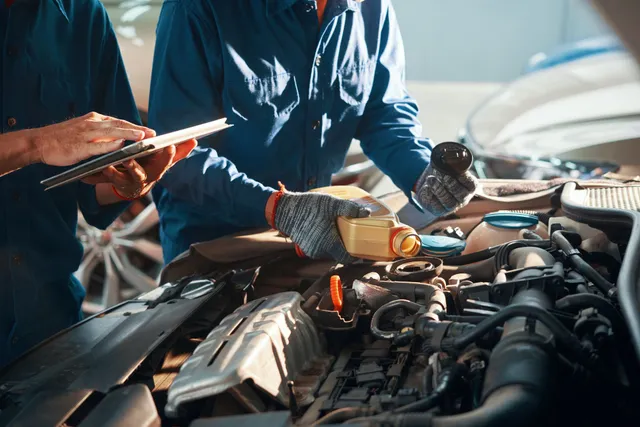A Comprehensive Guide to Maintaining Your Car for Longevity

Regular maintenance is essential for ensuring your car’s performance and extending its lifespan. By following proper care practices, you can avoid costly repairs and ensure your vehicle remains reliable for years to come. In this comprehensive guide, we outline the key aspects of car maintenance to help you achieve optimal longevity.
1. Follow the Manufacturer’s Maintenance Schedule
Every vehicle comes with a manufacturer-recommended maintenance schedule outlined in the owner’s manual. This schedule includes:
- Oil Changes: Regular oil changes prevent engine wear and maintain optimal performance.
- Filter Replacements: Replace air, oil, and fuel filters as recommended to ensure clean and efficient operation.
- Timing Belt and Chain Checks: Adhering to replacement intervals prevents engine damage.
Sticking to these guidelines is critical for maintaining your car’s longevity and warranty.
2. Inspect and Maintain Tires
Tires are your car’s connection to the road, and proper care can significantly extend their lifespan.
- Check Tire Pressure: Underinflated or overinflated tires can lead to uneven wear and reduced fuel efficiency.
- Rotate Tires: Regular tire rotations promote even wear across all tires.
- Alignment and Balancing: Periodically align and balance your wheels to prevent handling issues and uneven tire wear.
Proper tire maintenance not only improves safety but also enhances fuel economy and performance.
3. Keep Fluids at Optimal Levels
Fluids play a crucial role in your car’s operation. Regularly check and top up the following:
- Engine Oil: Essential for lubrication and cooling.
- Coolant: Prevents overheating by regulating engine temperature.
- Brake Fluid: Ensures optimal braking performance.
- Transmission Fluid: Supports smooth gear transitions.
Neglecting fluid levels can lead to severe mechanical issues and costly repairs.
4. Maintain the Battery
A healthy battery is vital for starting your car and powering electrical components. Follow these tips:
- Clean Battery Terminals: Remove corrosion to ensure a secure connection.
- Test Battery Regularly: Use a multimeter to check voltage levels and replace if necessary.
- Secure the Battery: Ensure the battery is properly fastened to avoid damage from vibrations.
Replace the battery every 3-5 years or as needed to prevent unexpected breakdowns.
5. Check and Replace Wipers and Lights
Visibility is crucial for safe driving, especially in adverse weather conditions.
- Inspect Wipers: Replace wiper blades when they leave streaks or squeak.
- Check Lights: Ensure all headlights, taillights, and turn signals are functioning correctly.
Regular checks ensure that your vehicle remains safe and roadworthy.
6. Monitor Brakes
Your braking system is essential for safety. Pay attention to:
- Brake Pads and Rotors: Replace them if you notice squealing noises or reduced braking efficiency.
- Brake Fluid: Change brake fluid as recommended to maintain hydraulic pressure.
Prompt attention to brake issues can prevent accidents and costly repairs.
7. Protect Your Car’s Exterior
A well-maintained exterior not only looks good but also prevents long-term damage.
- Wash and Wax Regularly: Protect the paintwork from dirt, debris, and UV rays.
- Address Scratches and Dents: Repair minor damages promptly to prevent rust.
- Cover Your Car: Use a car cover or park in shaded areas to protect against environmental elements.
Regular care keeps your car’s exterior in pristine condition, enhancing its resale value.
8. Keep the Interior Clean
A clean interior contributes to a pleasant driving experience and preserves the value of your car.
- Vacuum Regularly: Remove dirt and debris to prevent wear on upholstery.
- Use Protectants: Apply protectants to dashboards and leather seats to avoid cracking.
- Deodorize: Use air fresheners or clean vents to maintain a fresh environment.
Consistent cleaning ensures your car remains comfortable and inviting.
9. Drive Responsibly
Your driving habits have a significant impact on your car’s longevity. Follow these tips:
- Avoid Sudden Acceleration and Braking: Reduce strain on your engine and brakes.
- Follow Speed Limits: Prevent unnecessary wear on tires and suspension.
- Warm Up the Engine: Allow the engine to reach optimal temperature before driving, especially in cold weather.
Responsible driving practices minimize wear and tear, ensuring your vehicle lasts longer.
10. Schedule Professional Inspections
Even with regular maintenance, professional inspections are essential to identify potential issues early.
- Annual Inspections: Have your car checked annually for mechanical and safety concerns.
- Diagnostic Scans: Use modern diagnostic tools to identify hidden issues.
- Specialized Services: Rely on certified mechanics for complex repairs and maintenance.
Proactive inspections can save you from expensive repairs and keep your car in peak condition.
Conclusion
Maintaining your car for longevity requires a combination of regular care, responsible driving, and professional attention. By adhering to these practices, you can enjoy a reliable, efficient, and safe vehicle for years to come.